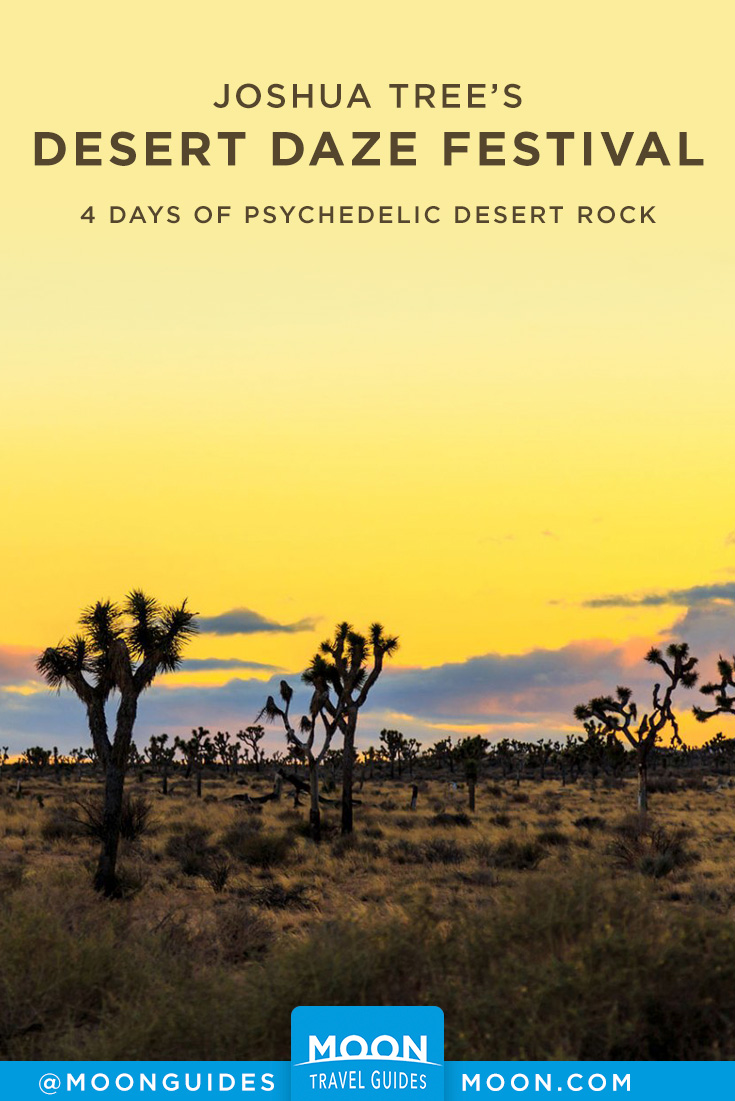Joshua Tree’s Desert Daze Festival
The full moon rises over the desert mountains, roosting above a Joshua tree. The pulsing music throws a net of sound over the swaying crowd as West African guitarist and singer-songwriter Bombino spins the surging desert blues of the Sahara into the open Mojave. It’s October and it’s the kick-off of the 5th Annual Desert Daze music festival.
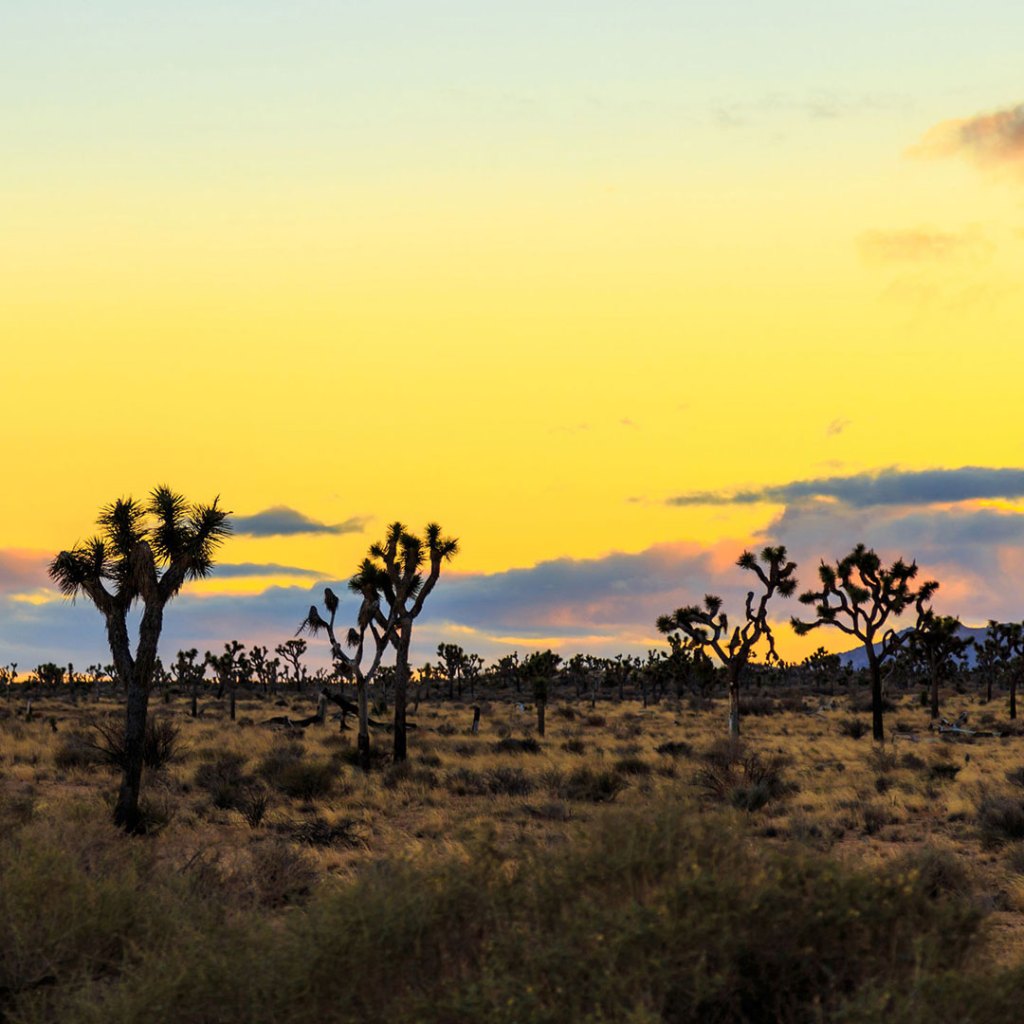
Sprawled across the 420 acres of the Institute of Mentalphysics in Joshua Tree, California, the festival has an organic feel, merging landscape, music, and art. Dedicated in 1941, the Institute is a retreat center for spiritual contemplation, peace, and quiet, but they’ve clearly made an exception for Desert Daze. If the festival is tapping into any type of spiritual training, it’s the ecstatic tradition: Desert Daze is a full-on party.
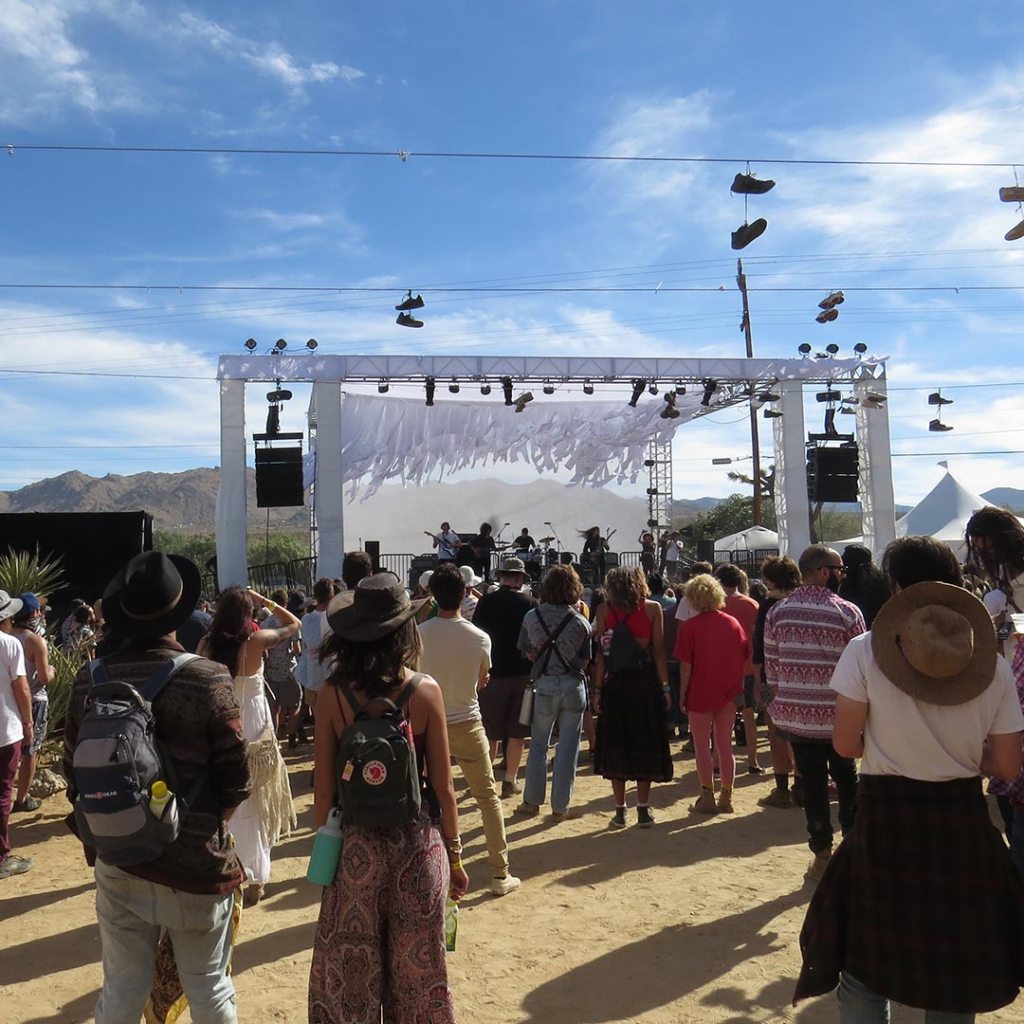
Psychedelic desert rock is the widely-interpreted genre with heavy-hitting international bands performing across the festival’s three stages. Over the three-day event, we took in the freak lounge performance of Gary Wilson, accompanied by nervous laughter from the crowd as he crawled on stage draped in the industrial plastic of an autopsy room. LA-based Thee Oh Sees creates a controlled frenzy of sound, blending psychedelic and punk rock. Everyone comes out for the dark, rock reverberation of Austin-based Black Angels on the main stage. We’re all so entranced by their sound that, at the end of one song, no one claps. The Danish duo Raveonettes mix melodic vocals and noise. Instead of the colorful psychedelic light playing behind other bands, they opt for a harsh, metallic light that cuts like a helicopter blade to match their wave of volume. The people eat it up; it’s a dance party in the dust.
My friends and I are lucky enough to have VIP tickets. They give us access to a peaceful vantage point with lounge chairs overlooking the campgrounds—an open desert expanse filled with tents and camper vans, hippies and the hip. Here we chat with one of the art directors. He has been on the grounds for a week transforming the already beautiful landscape into an event. There are little touches everywhere: colored lights infuse the Joshua trees at dusk. Art installations dot the landscape—comfortable nooks nestled in shaggy, ornamental cedars with crystals, Edison lights, oriental rugs, couches, and defunct televisions. The pièce de résistance is the Cave of Far-Gone Dreams, a curtained hut housing fake interactive museum exhibits on magic mushrooms.
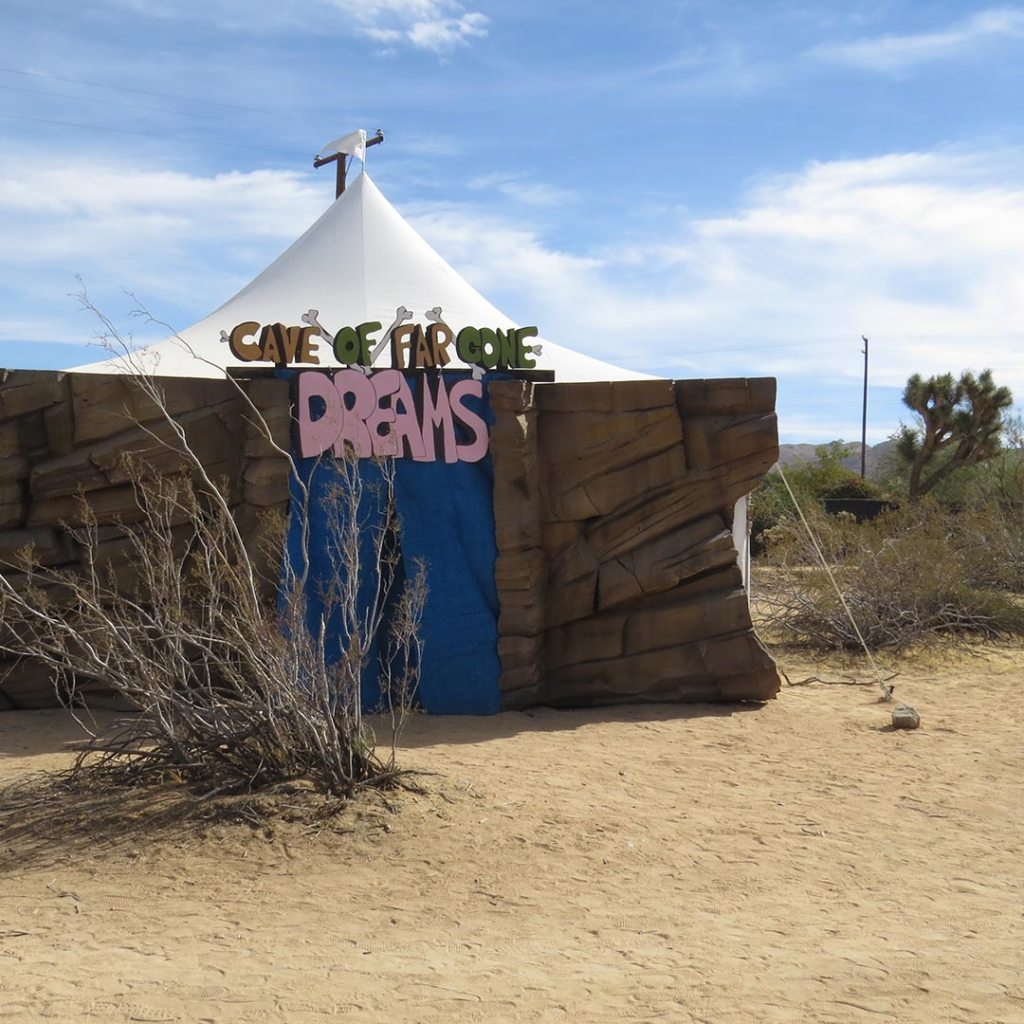
The art director tells us this is a power spot, and that the Institute was built where underground rivers meet in a vortex. According their website, the Institute claims to have exactly 18 vortices, describing them as places that amplify physical, spiritual, and emotional sensations. There are also geometric Frank Lloyd Wright-designed cottages, buildings, and landscaped walkways.
Mornings are quiet as a red sun slips over the mountain ridge. The days begin slowly, 2,000 festival goers awakening in tents and vans and cottages, fueling up with coffee, kombucha, breakfast burritos, weed, and beer until the stages open and people start streaming along the dusty paths toward music and common spaces.
It’s been a full weekend, but on Sunday night no one is quite ready to let it go. The final headliner, the Brian Jonestown Massacre, plays on and on to a packed stage. We need to get back to LA in the morning so we make our way to camp, but the vortices appear to be working. The amplified acoustic sounds of the band spill across the hills, washing over the campground and ushering out the weekend on a final wave of sound.
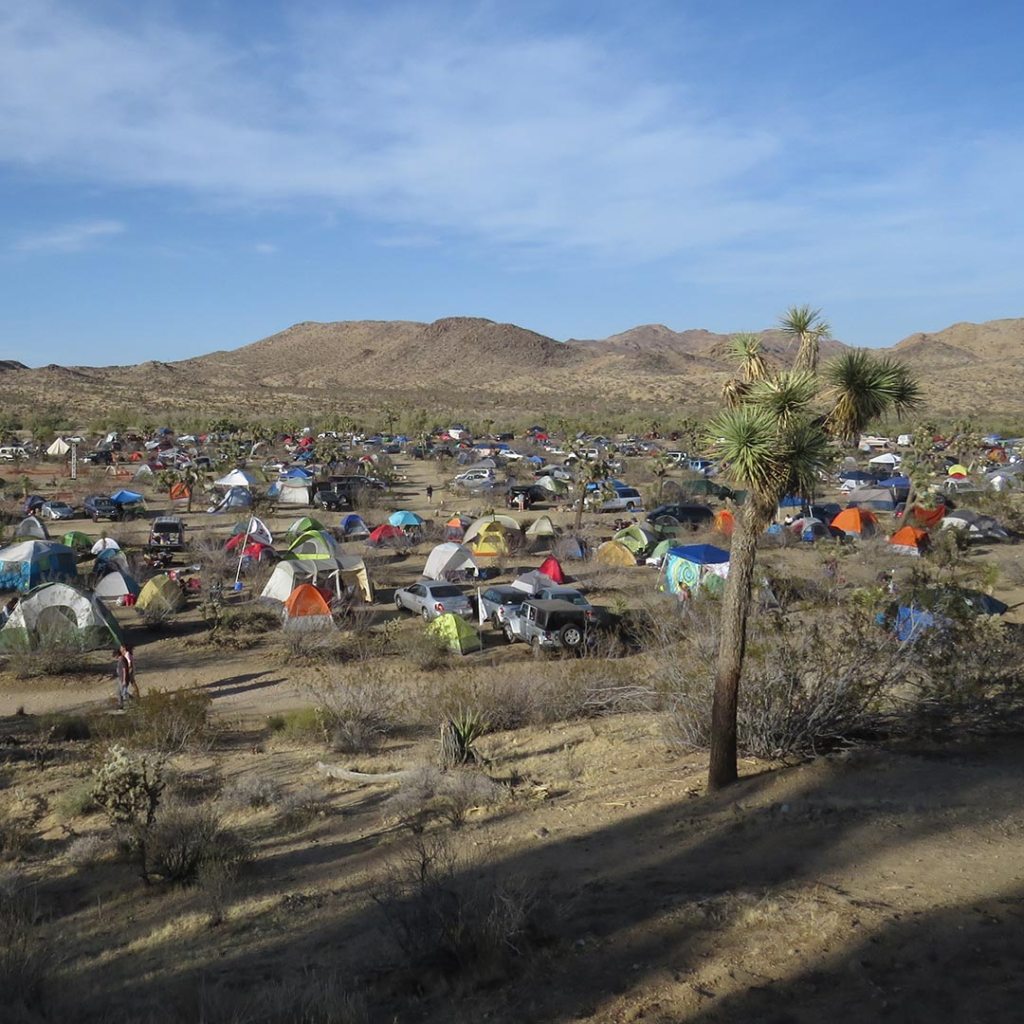
Pin it for Later
